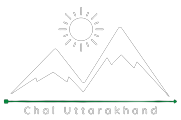The proper meal may make you feel fabulous and help you tackle any path, whether planning a short afternoon trek or a week-long hiking trip. The Trekking Nutrition will keep you going, get you moving, and help you recuperate after a challenging hiking journey. If you’re planning food for a long hike, seek portable, satiating, and nourishing snacks and meals to keep you going on even the most challenging hikes or backpacking trips.
To guarantee that you have a healthy and safe eating experience on your next outdoor expedition, heed these recommendations.
Always have a plan
On trips focused on activities, you typically require more food and drink than usual. For outdoor activities in hot weather, pay especially close attention to packing lots of water. Before going trekking or camping, keep the following in mind:
- Duration of the journey
- What foods and drinks you’ll bring and how you’ll consume them
- What equipment you’ll need to prepare food
Stay Hydrated
Pre-hydrate to reduce your load by consuming at least 4 cups of water before a hike. After that, it’s a good idea to budget for 2 cups of liquid for every hour of hiking. During your hike, be sure you have access to or can pack clean drinking water.
Recommended Food for day hikes
Even for a day trek, it’s crucial to consider your diet because you’ll be expending many calories and want to be safe on the route. Before your hike, take some trekking nutrition that is high in protein or complex carbohydrates to give yourself a boost of energy. Healthy snacks, fruits, vegetables, nuts, eggs, oatmeal, and nut butter are all excellent ways to start the day off right for your digestive system. Sugary cereals, bars with excessive chocolate or sweets (some are okay), pancakes, and waffles should all be avoided.
For camping or Multi-day trips
Packing trekking nutrition meals for several days at a time is more complicated. If you have a cooler, you can eat perishable goods on the first day; however, plan your meals to have what you want and need. If not, stock up on any of these easily packed, shelf-stable essentials to last you:
-The aforementioned foods that are portable
-prepared cereal
-In squeezable pouches, fruit or vegetable puree (such as applesauce)
-Pouches of fish or poultry, or tinned fish, poultry, or beef in small or large portions
-Mayonnaise, mustard, taco sauce, and soy sauce in individual packets
Don’t forget reasonable food safety prices
Always adhere to safe food handling procedures, from packaging through plating. Remember that perishable food should not be left outside for more than an hour in hot weather (90°F or higher) and two hours in mild weather. If not, the food becomes hazardous and needs to be discarded. Bring these fundamentals for food safety:
-Hand sanitiser, biodegradable soap, or disposable tissues
-plates and bowls
-Pot or kettle for cooking
-utensils for eating and cooking
-Can opener
-ice packs, if necessary
-garbage bags
The foods high in carbohydrates and proteins are the finest to eat after a hike. Eating foods high in protein helps your body repair its muscle proteins while eating foods high in carbohydrates helps your body refill its glycogen stores. Consuming carbs is crucial during endurance exercises like long walks. Aim to eat a meal about 45 minutes after a strenuous hike so your body can better restore its glycogen and muscle proteins after activity.

